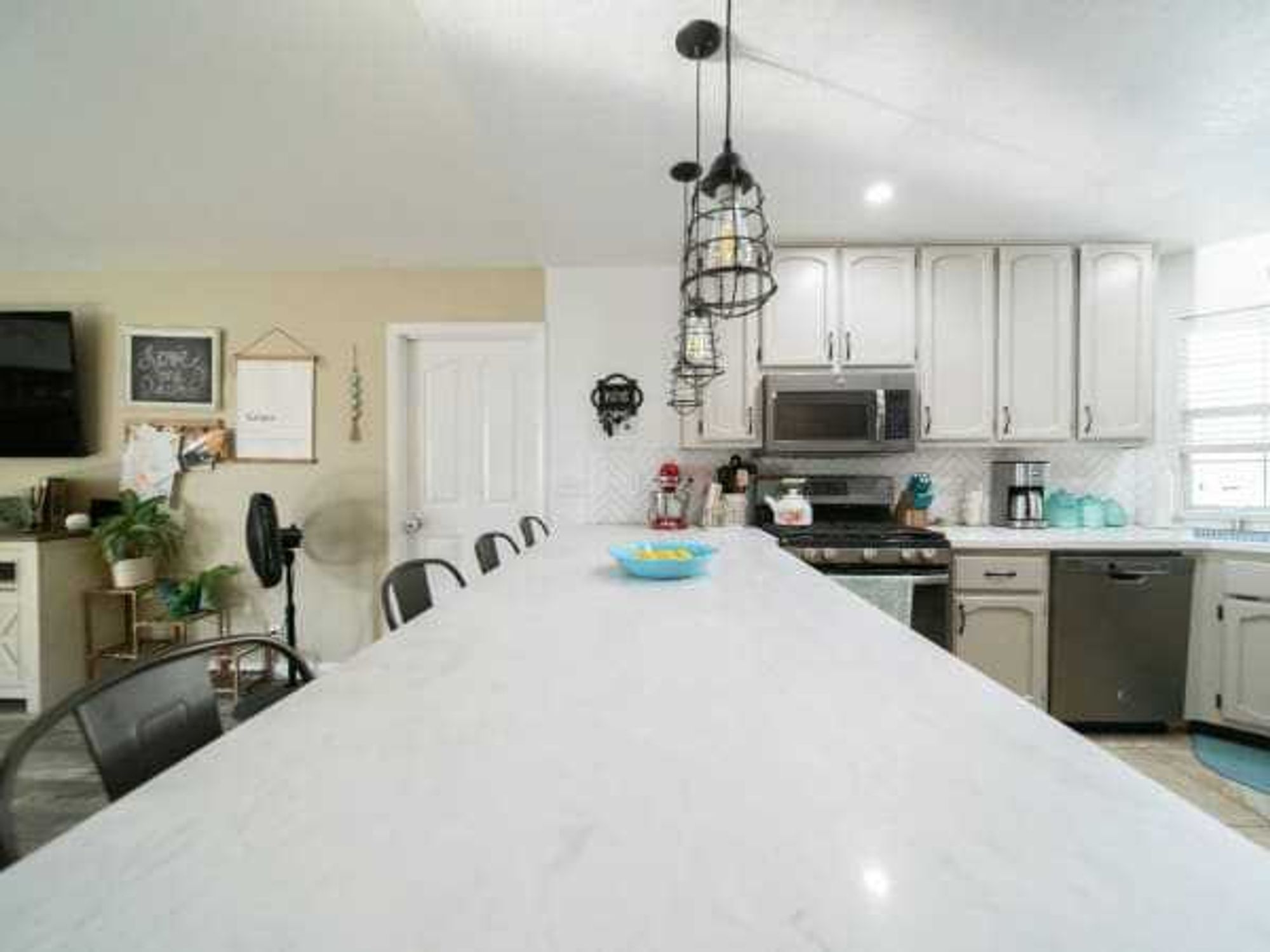As seen on HGTV
Staging your home: Why it's important and how to do it
 A few key pieces can make a room come alive
A few key pieces can make a room come alive While leaving a house bare can seem spacious, it also seems cold. This is whatthe room looked like before Splain worked her magic.
While leaving a house bare can seem spacious, it also seems cold. This is whatthe room looked like before Splain worked her magic. Before: Leaving personal pictures up is a major no-no. It makes potential buyerssee the house as yours.
Before: Leaving personal pictures up is a major no-no. It makes potential buyerssee the house as yours. After: With just a few changes, suddenly buyers can see themselves living here.
After: With just a few changes, suddenly buyers can see themselves living here. It doesn't have to take a lot to pull a bathroom together.
It doesn't have to take a lot to pull a bathroom together. Make buyers focus on what you want them to see, like this window.
Make buyers focus on what you want them to see, like this window.
Valerie Splaine is the founder of Home Staging and Redesign of Houston. A former realtor, she found her calling staging both vacant and occupied homes to entice buyers. She walked CultureMap through one of her properties and taught us the do's and don'ts of showing your house.
Valerie Splaine has been known to do her job too well. Once, after staging a home (at the request of the realtor who was selling it), the sellers thought their house looked so nice that they decided to stay. Although that particular success proved slightly uncomfortable, Splaine's expertise in staging homes has translated to major dividends for owners.
Her favorite story is about an outdated house that had been on the market for 299 days. Splaine staged it on a Friday — with no major updates other than repainting the molding — and the home got a full-price offer on Sunday. The eventual buyer just had to have it.
Here are her tips to make your home just as impossible to pass up:
Be Cool — Buyers typically see 10 homes a day, especially stressful if they're searching on a time crunch. When a buyer walks into a home after a long day of house-hunting, their reaction should be, "Phew! Let's stay here a while." It's worth the utility bill to crank that AC.
Keep it Colorful — Ideally, you should work from one theme throughout your house. But it always pays to use a pop of color to draw the eye to say, a great window. Splaine recounts one time that buyers found her after a long day of searching because they wanted to make an offer on "the house with the purple dining room chairs."
"People are in and out in five minutes," Splaine says. "You want them to remember your house."
If You Can't Beat 'Em, Join 'Em — One ultra-modern piece in an otherwise outdated room doesn't update it, it just doesn't work. Work with what you have, and make it look like it's on purpose.
Ditch the Bath Mat for New Bath Towels — Take the rugs off your bathroom floor, Splaine says. It cuts up the floor space and makes what's usually a small room appear even smaller. And if you're still living in the house you're trying to sell, buy new bath towels that are just for show. "You need props whether the home is vacant or occupied," Splaine says.
Boycott Personal Pics — Personal pictures scream "This is my house," and prevent potential buyers from envisioning themselves living there. At best, they're a distraction. "Anytime someone's looking at a wedding photo, they're not looking at the house." Splaine says. And while you're at it, clear your fridge — it makes your appliances seem newer.
If you've got children who like to see their art work displayed, Splaine suggests putting the drawings on a corkboard out of sight until the house is sold.
Camp Out — Too often, Splaine says, people take the good stuff to their new house and leave the garage-sale leftovers to furnish the house they're trying to sell. "Camp out!" Splaine says. "The house you're selling is your liability." Leave the good stuff to help sell the old place, and do without until you've got it off your hands.
Take new pictures — Once you're finished staging, make sure your realtor takes new pictures. No one will come to see your hard work unless they're enticed to investigate.
